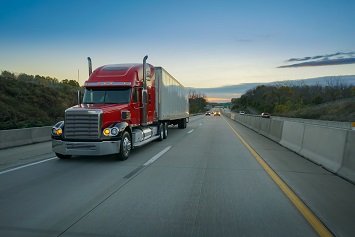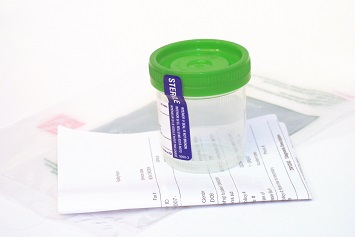Employers in the trucking industry are facing heightened requirements for ensuring their drivers’ drug and alcohol compliance: Employers must perform twice as many random drug and alcohol tests of commercial motor vehicle (CMV) drivers and must query the Federal Motor Carrier Safety Administration’s (FMCSA) Drug and Alcohol Clearinghouse to check the records of current and prospective drivers for any drug or alcohol violations and compliance with return-to-duty requirements.
The FMCSA announced December 27, 2019, it would double the minimum annual percentage rate of random drug testing for CMV drivers. The minimum random drug testing rate of commercial driver’s license (CDL) holders now is 50% for calendar year 2020.
Since January 6, 2020, employers also must query the Commercial Driver’s License Drug and Alcohol Clearinghouse when considering any CMV drivers for employment. Employers also must make annual checks of Clearinghouse records for all current employees. Employers are required to get drivers’ electronic or written consent before querying the Clearinghouse database.
The FMCSA’s Clearinghouse is a central repository of records of CMV drivers’ drug and alcohol violations. It attempts to prevent drivers from concealing any drug or alcohol violations simply by moving to another job or another jurisdiction. Clearinghouse records include records of driver drug and alcohol violations, as well as whether a driver has completed the return-to-duty process and follow-up testing after a positive test or refusal to test.
The December 5, 2016, Clearinghouse rule also will require State Driver Licensing Agencies (SDLAs) to query the database whenever a driver seeks a new, a renewed, an upgraded, or a transferred CDL, but the states’ compliance date has been delayed until January 6, 2023. While the states’ compliance date has been delayed, SDLAs may voluntarily request records from the Clearinghouse before compliance is required.
Employers may not allow a driver to operate a CMV if the driver has not completed the return-to-duty requirements following a drug or an alcohol violation.
DOT Drug and Alcohol Testing
The Department of Transportation (DOT) established drug and alcohol testing requirements for all safety-sensitive transportation positions in 49 CFR Part 40. Part 40 testing procedures apply to CMV drivers, as well as armed transit security officers, bus drivers, locomotive engineers, aircraft mechanics, pilots, pipeline controllers, ships’ captains and others operating commercial vessels, and subway operators. Motor carrier-specific drug and alcohol policies are set out in 49 CFR 382.
The DOT requires a five-panel test for controlled substances, including amphetamines and methamphetamines (including MDA, MDEA, and MDMA), cocaine, marijuana, opiates (opium and codeine derivatives), and phencyclidine (PCP).
Employers typically contract with a diagnostic laboratory to conduct urinalysis and medical professionals to review test results. However, employers remain responsible for the compliance of service agents, and there are civil penalties for noncompliance.
Service agents in a drug and alcohol testing program can include:
- Breath alcohol technicians and screening test technicians, individuals trained to conduct alcohol screening and confirmation tests, document test results, and transmit results in a timely and confidential manner;
- Consortium/third-party administrators (C/TPAs), service agents who coordinate a variety of drug and alcohol testing services for employers;
- Laboratories, Department of Health and Human Services (DHHS)-certified laboratories that evaluate urine specimens submitted by collectors, including an analysis to determine the existence and concentration of controlled substances;
- Medical review officers (MROs), licensed physicians trained and certified to review lab results and validate whether a test is positive;
- Substance abuse professionals (SAPs), licensed or certified healthcare professionals with knowledge of the diagnosis and treatment of alcohol and controlled substance-related disorders; and
- Urine collectors, individuals trained to collect and ship urine specimens and ensure collection site security and integrity.
Collectors at laboratories must comply with DOT procedures, including the completion of Chain of Custody Forms (CCFs). A collector verifies an employee’s identification and has the employee empty his or her pockets. The collector must confirm the employee has nothing that could dilute or adulterate a urine sample.
The employee then selects a sealed collection kit and must provide at least 45 milliliters (ml) of urine. The employee hands the collection container to the collector, who checks the sample temperature and pours the sample into two bottles. The collector and employee sign seals on the two sample bottles and complete the CCF paperwork.
Samples are tested by a laboratory, and results are sent to an MRO for evaluation.
Employers also must have a designated employer representative (DER), who receives analyses from MROs and is authorized to remove drivers from duty in the event of a positive test or refusal to submit to testing. C/TPAs may not act as an employer’s DER.
Workplace Policy, Training
Employers must develop a written policy on controlled substance use and alcohol misuse in the workplace, and the policy must be provided to every driver. Employers also must train supervisors in administration of their drug and alcohol policies and procedures.
Employers, including those in the trucking industry, sometimes are subjected to aggressive marketing materials from training and education providers, with dire notices reading, “Your Company is out of compliance”; “Don’t fail your DOT audit!” or “You are subject to a civil penalty up to $10,000 for being out of compliance.” Such notices are not sent or endorsed by the FMCSA.
FMCSA rules require preemployment, random, and postaccident testing. CMV drivers are subject to random testing even when at home in an off-duty status. Once an employer has notified a driver of required random testing, the driver must report to a testing location for a random drug or alcohol test. Supervisors also may compel drivers to submit to testing if they exhibit signs of drug or alcohol abuse. Reasonable suspicion is based on observations of appearance, behavior, speech, or body odors of a driver.
Refusing to take a drug or an alcohol test, a positive drug test result, or an alcohol concentration of .04 or more requires immediate removal of a driver from operating any CMV on public roadways. Once that happens, the employer must provide the driver with a list of acceptable SAPs from which to choose to begin the return-to-duty process. This process must be completed before a driver who has tested positive, or refused a drug test, can legally return to driving CMVs.
Return-to-Duty, Follow-Up Testing
A driver also must submit to return-to-duty drug and alcohol tests under “direct observation” conditions. An observer of the same gender as the employee must watch the employee urinating directly into a collection container.
Once a driver has completed the return-to-duty process and testing and an SAP has signed a return-to-duty report, the driver then is subject to follow-up testing. The testing consists of a minimum of 6 unannounced, directly observed tests, conducted during the first 12 months following the return-to-duty test.
However, an SAP can prescribe follow-up testing for a maximum of 5 years for drivers who have tested positive or refused to test.
The FMCSA regulations include a requirement that the agency set a minimum annual percentage rate for random controlled substances testing for each calendar year. The FMCSA, on December 27, 2019, raised the minimum rate for 2020 to 50% of drivers from the previous rate of 25%. The minimum annual percentage rate for random alcohol testing remains at 10%.
The 50% random drug testing rate may remain in effect until 2023 because the FMCSA may only lower the minimum rate if the positive rate is less than 1% for 2 consecutive calendar years. Analysis of 2021 test results may not be completed until sometime in 2022.
Marijuana is the most commonly detected substance in all tests, according to laboratory firm Quest Diagnostics. Quest reported a 21.4% increase in positive results for controlled substances among transportation and warehousing workers between 2015 and 2017.
The American College of Occupational and Environmental Medicine (ACOEM) and the National Safety Council (NSC) both have expressed concerns about roadway and workplace safety, as more states have enacted medical and recreational marijuana laws.
State laws do not preempt federal transportation regulations. The DOT has repeatedly stated that marijuana remains a drug listed in Schedule I and that safety-sensitive employees may not use marijuana and are subject to drug testing under department regulations.
An MRO may not certify a drug test as “negative” simply because a physician has recommended a transportation employee in a safety-sensitive position use marijuana.
Employers must set up and administer random drug and alcohol testing programs, but the DOT has recommended a series of “best practices” for random testing programs. Best practices for random testing include:
- Refreshing the testing pool before performing a random selection to include all safety-sensitive employees subject to DOT random testing, excluding those not subject to DOT random testing;
- Spreading testing dates reasonably throughout the year in an unpredictable pattern;
- Conducting random alcohol tests just before, during, or after an employee performs a safety-sensitive job;
- Conducting tests at the start, middle, or end of each shift to enhance the unpredictability of the random testing program;
- Having procedures in place to ensure that each employee receives no advanced notice of selection; and
- After each test, returning an employee’s name to the pool for random testing so he or she becomes just as likely as anyone else to be selected next time.
How the Clearinghouse Works
Drivers may register with the Clearinghouse to electronically access their own Clearinghouse records. However, violations are associated with a driver’s CDL information even if he or she hasn’t registered with the Clearinghouse.
SAPs must use the Clearinghouse to report specific information about a CDL driver’s return-to-duty activities, including:
- Driver’s name, date of birth, CDL number, and state of issuance;
- Date of initial SAP assessment reported by the close of the business day following the assessment; and
- Date the SAP determined the driver demonstrated successful compliance with education and treatment requirements and is eligible for return-to-duty testing reported by the close of the business day following the determination.
Canadian and Mexican SAPs also can report a driver’s initial SAP assessment date and the date a driver is eligible for return-to-duty testing.
Employers must pay a flat $1.25-per-query fee. Employers may purchase query plan bundles; however, there is no bulk discount.
Owner-operators that employ only themselves in single-driver operations must designate a C/TPA to comply with the employer Clearinghouse reporting requirements.


